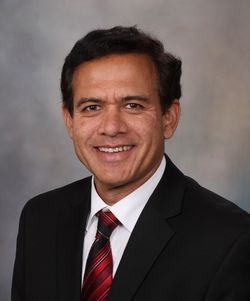Addressing the Burden of Cardiovascular Comorbidities in Narcolepsy: Strategies and Perspectives to Optimize Treatment and Patient Outcomes
Click Here to Manage Email Alerts

 This activity is jointly provided by Partners for Advancing Clinical Education and Cardiometabolic Health Congress.
This activity is jointly provided by Partners for Advancing Clinical Education and Cardiometabolic Health Congress.
This activity is supported by an educational grant from Jazz Pharmaceuticals, Inc.
Program Overview:
Launch Date: 8/11/2023
Expiration Date: 8/11/2024
Several cardiometabolic comorbidities are common in patients with narcolepsy. Often these disorders are overlooked, but they have important implications in the management of this condition. Some medications used to treat symptoms of narcolepsy may have potential negative effects on cardiovascular health, including in patients that are sensitive to sodium, such as those with hypertension or other cardiovascular risk factors.
This activity overviews the links between cardiometabolic risk and narcolepsy, individualization of therapy for narcolepsy patients with cardiovascular risk, as well as narcolepsy treatment options and recent advances in pharmacotherapy for these patients. The information is presented in an interactive format, which contains a mix of high-impact visuals, infographics, expert faculty videos, as well as resources and suggested readings, all organized into different segments to facilitate learning.
LEARNING OBJECTIVES
After completing this activity, the participant should be better able to:
- Recognize that cardiovascular risk factors are common in patients with narcolepsy.
- Describe the pathophysiological connections between narcolepsy and increased cardiovascular risk.
- Explain the rationale and evidence behind the increased risk for major adverse cardiovascular events with commonly used narcolepsy agents.
- Summarize recent updates with new and emerging narcolepsy treatment.
TARGET AUDIENCE
U.S. based sleep specialists, psychiatrists, neurologists, pulmonologists, primary care physicians, nurses, nurse practitioners, physician assistants, pharmacists and allied healthcare professionals.
FACULTY

Virend K. Somers, MD, PhD (Chair)
Professor of Medicine, Mayo Clinic
Rochester, MN Dr. Somers discloses the following:
- Advisor: Good Sleep

Richard K. Bogan, MD, FCCP, FAASM
Owner, Bogan Sleep Consultants, LLC
Columbia, SC Dr. Bogan discloses the following:
- Shareholder WaterMark Medical, Healthy Humming, LLC
- Board of Directors: WaterMark Medical
- Consultant to Jazz, Harmony Biosciences, Takeda, Avadel, Oventus
- Industry funded research for Avadel, BresoTec, Idorsia, Suven, Jazz, Balance, Vanda, Merck, Eisai, Philips, Fresca, Takeda, Liva Nova, Roche, Sommetrics, NLS, Sanofi, Apnimed
- Speakers Bureau for Jazz, Eisai, Harmony, Idorsia

Michael J. Thorpy, MD
Professor of Neurology
Albert Einstein College of Medicine Director, Sleep-Wake Disorders Center
Department of Neurology
Montefiore Medical Center
Bronx, NY Dr. Thorpy discloses the following:
- Consultant/Advisory Board: Axsome, Balan
JOINT PROVIDERSHIP STATEMENT



In support of improving patient care, this activity has been planned and implemented by Partners for Advancing Clinical Education (PACE) and Cardiometabolic Health Congress (CMHC). PACE is jointly accredited by the Accreditation Council for Continuing Medical Education (ACCME), the Accreditation Council for Pharmacy Education (ACPE), and the American Nurses Credentialing Center (ANCC), to provide continuing education for the healthcare team.
PHYSICIAN CONTINUING EDUCATION
PACE designates this enduring material for a maximum of 1.0 AMA PRA Category 1 Credits™. Physicians should claim only the credit commensurate with the extent of their participation in the activity.
NURSING CONTINUING EDUCATION
The maximum number of hours awarded for this Continuing Nursing Education activity is 1.0 contact hours. Pharmacotherapy contact hours for Advance Practice Registered Nurses will be designated on your certificate.
PHARMACY CONTINUING EDUCATION
PACE designates this continuing education activity for 1.0 contact hours (0.10 CEUs) of the Accreditation Council for Pharmacy Education.
Universal Activity Number - JA4008073-9999-23-185-H01-P. Type of activity: Application
For Pharmacists: Upon completing the post-test and the activity evaluation form, transcript information will be sent to the NABP CPE Monitor Service within 4 – 6 weeks.
METHOD OF PARTICIPATION & REQUEST FOR CREDIT
There are no registration fees for this activity. During the period August 11, 2023 through August 11, 2024, participants must read the learning objectives and faculty disclosures, study the educational activity, obtain a score of 75% or better on the post-test, and complete the evaluation. Upon completing, your certificate will be available for print.
For additional information about the accreditation of this activity, please visit https://partnersed.com.
For Pharmacists: Please complete the evaluation instructions above. Upon registering and completing the activity evaluation, your transcript information will be sent to the NABP CPE Monitor Service within 4-6 weeks.
DISCLOSURES
The PACE planners and others have no relevant financial relationship(s) to disclose with ineligible companies. The CMHC planners and others have no relevant financial relationship(s) to disclose with ineligible companies.
DISCLOSURE OF CONFLICT OF INTEREST
PACE requires instructors, planners, managers, and other individuals who are in a position to control the content of this activity to disclose all financial relationships they may have with ineligible companies. All relevant financial relationships are thoroughly vetted and mitigated according to PACE policy. PACE is committed to providing learners with high-quality accredited CE activities and related materials that promote improvements or quality in healthcare and not a specific proprietary business interest of an ineligible company.
DISCLOSURE OF UNLABELED USE
This educational activity may contain discussion of published and/or investigational uses of agents that are not indicated by the FDA. The planners of this activity do not recommend the use of any agent outside of the labeled indications. The opinions expressed in the educational activity are those of the faculty and do not necessarily represent the views of the planners. Please refer to the official prescribing information for each product for discussion of approved indications, contraindications, and warnings.
DISCLAIMER
Participants have an implied responsibility to use the newly acquired information to enhance patient outcomes and their own professional development. The information presented in this activity is not meant to serve as a guideline for patient management. Any procedures, medications, or other courses of diagnosis or treatment discussed or suggested in this activity should not be used by clinicians without evaluation of their patient’s conditions and possible contraindications and/or dangers in use, review of any applicable manufacturer’s product information, and comparison with recommendations of other authorities.

